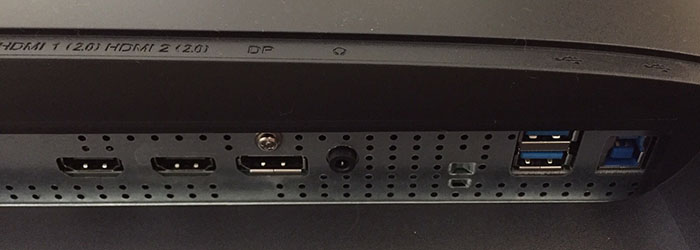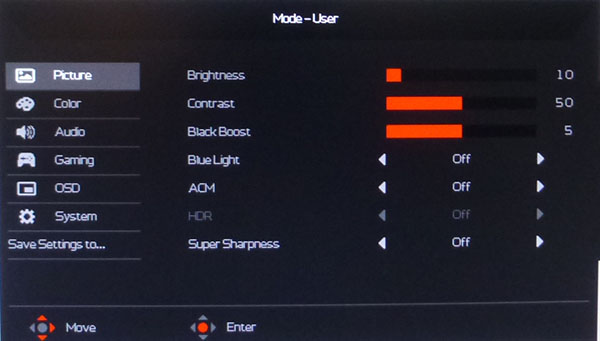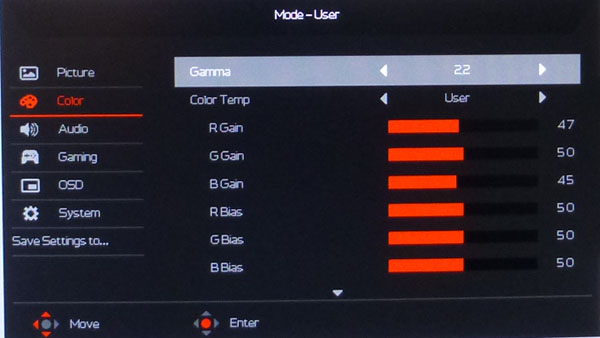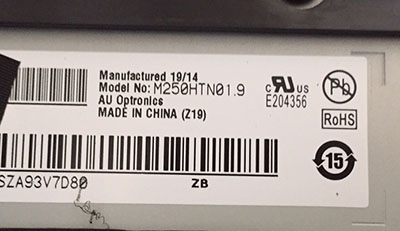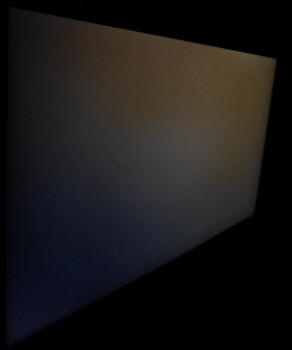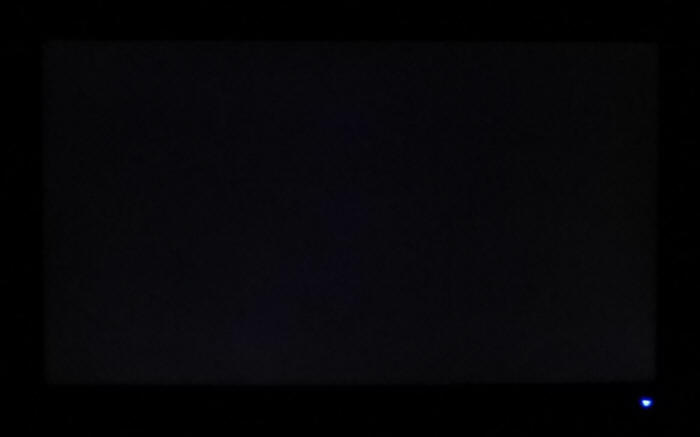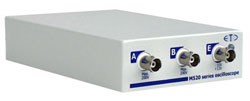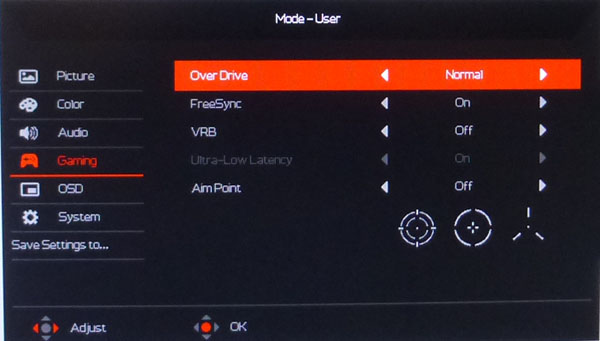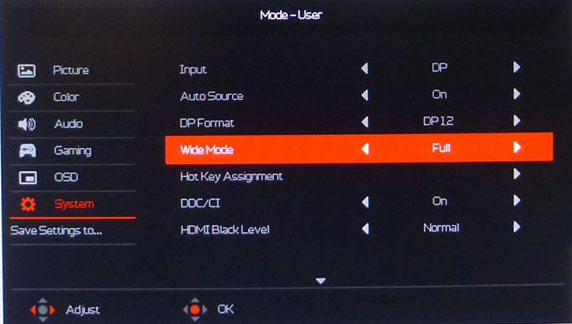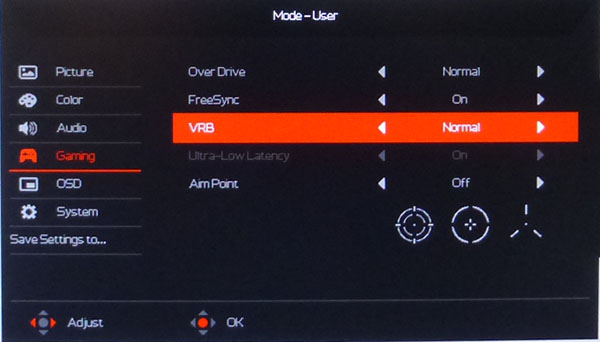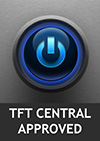|
|
||||
|
||||
|
|
|
|||||||||||||||||||||||||||||||||||||||||||||||||||||||||||||||||||||||||||||||||||||||||||||||||||||||||||||||||||||||||||||||||||||||||||||||||||||||||||||||||||||||||||||||||||||||||||||||||||||||||||||||||||||||||||||||||||||||||||||||||||||||||||||||||||||||||||||||||||||||||||||||||||||||||||||||||||||||||||||||||||||||||||||||||||||||||||||||||||||||||||||||||||||||||||||||||||||||||||||||||||||||||||||||||||||||||||||||||||||||||||||||||||||||||||||||||||||||||||||||||||||||||||||||||||||||||||||||||||||||||||||||||||||||||||||||||||||||||||||||||||||
|
Monitor Specifications |
|||
|
Size |
24.5" |
Panel Coating |
Light AG coating |
|
Aspect Ratio |
16:9 flat |
Interfaces |
1x DisplayPort 2x HDMI 2.0
4x USB 3.0 |
|
Resolution |
1920 x 1080 |
||
|
Pixel Pitch |
0.283mm |
Design colour |
Matte black bezels, stand and base |
|
Response Time |
0.3ms G2G (min) |
Ergonomics |
Tilt, 120mm height, swivel, rotate |
|
Static Contrast Ratio |
1000:1 |
||
|
Dynamic Contrast Ratio |
100 million:1 |
VESA Compatible |
Yes 100 x 100 mm |
|
Brightness |
400 cd/m2 |
Accessories |
DisplayPort, HDMI, power, USB cables |
|
Viewing Angles |
170 / 160 |
||
|
Panel Technology |
AU Optronics TN Film |
Weight |
with stand: 5.51 Kg |
|
Backlight Technology |
W-LED |
Physical Dimensions (WxHxD) |
558 x 383 - 503 x 234 mm |
|
Colour Depth |
16.7m |
||
|
Refresh Rate |
240Hz |
Special Features |
AMD FreeSync, G-sync support, Motion Blur Reduction mode (VRB), 4x USB 3.0 ports, headphone output, 2x 2W speakers |
|
Colour Gamut |
Standard gamut sRGB |
||
The XF252Q offers a good range of modern connectivity with 1x DisplayPort and 2 x HDMI 2.0 offered for video connections. For PC connectivity the DisplayPort is the most common option, with HDMI being available then for connecting external games consoles or Blu-ray players potentially. Both will support variable refresh rates from AMD graphics cards or games consoles. From NVIDIA cards you can only use VRR over DisplayPort.
The screen has an internal power supply and comes packaged with the power cable you need. A headphone output connection is provided for audio pass-through, or there are also 2x 2W basic integrated stereo speakers on this model. There are also a couple of USB ports located on the back of the screen and 2 on the left hand edge for easy access (one with fast charging support).
Below is a summary of the features and connections of the screen.
|
Feature |
Yes / No |
Feature |
Yes / No |
|
Tilt adjust |
|
DVI |
|
|
Height adjust |
|
HDMI |
|
|
Swivel adjust |
|
D-sub |
|
|
Rotate adjust |
|
DisplayPort |
|
|
VESA compliant |
|
Component |
|
|
USB 2.0 Ports |
|
Audio connection |
|
|
USB 3.0 Ports |
|
HDCP Support |
|
|
Card Reader |
|
Integrated Speakers |
|
|
Ambient Light Sensor |
|
PiP / PbP |
|
|
Human Motion Sensor |
|
Blur Reduction Mode |
|
|
Touch Screen |
|
NVIDIA G-Sync (native) |
|
|
Factory calibration |
|
AMD FreeSync |
|
|
Hardware calibration |
|
G-sync Compatible Certified |
|
|
Uniformity correction |
|
Meaningful HDR |
|

Design and
Ergonomics


Above: front and back views of the screen
The XF252Q comes in a black design with matte plastics used for the bezel and rear enclosure. There is 3 side borderless design with a very thin 2mm plastic trim around the sides and top. There is also a further 4.5mm black panel edge, giving a total border of 6.5mm along the sides and top. The bottom bezel has a textured pattern to it and is thicker at 20mm, with an additional 1mm black panel edge (21mm in total). There is a shiny silver 'acer' logo in the middle of the bottom bezel and a small power LED in the bottom right hand corner that glows blue during normal operation.
The arm of the stand is made of black aluminium and connects in to a matte black plastic, round base section. That's easy to screw on, and the whole arm can be easily unclipped from the back if you'd rather VESA 100mm mount the screen.


Above: side views of the screen
The screen has a thin profile as you can see from above. There are 2x USB 3.0 ports located on the left hand side for easy access which is useful. One of them has fast charging capability too.
The stand does offer a very good range of ergonomic adjustments though. Tilt provides a wide adjustment range and is pretty smooth and easy to operate. Height adjustment is also easy and smooth to operate. At the lowest height adjustment the bottom edge of the screen is about 55mm from the desk, and at maximum extension about 175mm. This provides a 120mm total height adjustment range as advertised. Side to side pivot is smooth but a little stiff to move. The rotation function is a bit bumpy and stiff but is available for those who need it. The stand is reasonably stable, although the screen has a bit of wobble as you move it around.
A summary of the ergonomic adjustments are shown below:
|
Function |
Range |
Smoothness |
Ease of Use |
|
Tilt |
Yes |
Smooth |
Easy |
|
Height |
120mm |
Smooth |
Easy |
|
Swivel |
Yes |
Smooth |
Bit stiff |
|
Rotate |
Yes |
Bumpy |
Bit stiff |
|
Overall |
Good adjustments offered and mostly easy to use. A bit of wobble from the screen when being moved. |
||
The materials were of a modest standard and the build quality felt ok. Nothing fancy in design or appearance, but functional and simple. There was no audible noise from the screen, even when conducting specific tests which can often identify buzzing issues. The whole screen remained pretty cool even during prolonged use.
The back of the screen features the connections as shown above. Useful to see a headphone output and 2x USB 3.0 ports provided. These are in addition to the 2x easy access USB 3.0 ports on the left hand edge of the screen.
The OSD is controlled through a joystick on the back right edge of the screen and 3x pressable buttons. There is also a power on/off button. There is quick access to the preset mode menu, brightness control and input source too by default, although you can change the preset mode and brightness quick access to something else if you'd rather.
The main OSD menu provides a large range of options to play with and tweak. Navigation was quick, easy and pretty intuitive with the joystick, although sometimes getting back out of certain sections of the menu was a little confusing.

Power Consumption
|
|
|
We have plotted these results below compared with other screens we have tested. The consumption (comparing the calibrated states) is comparable to the other 24.5" sized screens we've tested like the AOC AGON AG251FZ and Asus ROG swift PG258Q. That is a little less than larger sized models in most cases.


Panel and Backlighting
|
|
Panel Part and Colour Depth
The Acer Nitro XF252Q features an AU Optronics M250HTN01.9 TN Film technology panel. This is part of their latest generation of TN Film panel with a high refresh rate, and new lower response time spec. This has been boosted to 3ms ISO and 0.5ms G2G in their panel roadmap plans, and then incorporated by Acer in to this display. The panel offers 16.7m colours via (we believe given the panel size, although not confirmed) a 6-bit + FRC colour depth.
Screen
Coating
The screen coating is a medium anti-glare (AG) offering in keeping with other TN Film panels we've tested. Thankfully it isn't a heavily grainy coating like some old IPS-type panels feature, although there is some graininess noticeable. It retains its anti-glare properties to avoid too many unwanted reflections of a full glossy coating, but does not produce an too grainy or dirty an image that some thicker AG coatings can. There were some slight cross-hatching patterns visible on the coating as well but only if you looked very closely.
Backlight Type and Colour Gamut
The screen uses a White-LED (W-LED) backlight unit which is standard in today's market. This helps reduce power consumption compared with older CCFL backlight units and brings about some environmental benefits as well. The W-LED unit offers a standard colour gamut which is approximately equal to the sRGB colour space, slightly wider according to our measurements in the following sections. Anyone wanting to work with wider colour spaces for their content, gaming or HDR would need to consider some of the wide gamut displays available instead or those with additional coatings added to extend the colour space. If you want to read more about colour spaces and gamut then please have a read of our detailed article.
Backlight
Dimming and Flicker
We tested the screen to establish the methods used to control backlight dimming. Our in depth article talks in more details about a previously very common method used for this which is called Pulse Width Modulation (PWM). PWM involves the rapid switching of the backlight off/on to simulate lower brightness levels when you adjust the screen's brightness control. This in itself gives cause for concern to some users who have experienced eye strain, headaches and other symptoms as a result of the flickering backlight caused by this technology. We use a photosensor + oscilloscope system to measure backlight dimming control with a high level of accuracy and ease. These tests allow us to establish:
1) Whether PWM is being used to control the
backlight
2) The frequency and other characteristics at which this operates, if it is used
3) Whether a flicker may be introduced or potentially noticeable at certain
settings
If PWM is used for backlight dimming, the higher the frequency, the less likely you are to see artefacts and flicker. The duty cycle (the time for which the backlight is on) is also important and the shorter the duty cycle, the more potential there is that you may see flicker. The other factor which can influence flicker is the amplitude of the PWM, measuring the difference in brightness output between the 'on' and 'off' states. Please remember that not every user would notice a flicker from a backlight using PWM, but it is something to be wary of. It is also a hard thing to quantify as it is very subjective when talking about whether a user may or may not experience the side effects.
The Tests for this display are shown below.
100%
50%
0%



Above scale
= 1 horizontal grid = 5ms
At all brightness settings a constant Direct Current (DC) voltage is applied to the backlight, and the screen is free from the obvious off/on switching of any PWM dimming method. As a result, the screen is flicker free as advertised.
|
Pulse Width Modulation Used |
No |
|
Cycling Frequency |
n/a |
|
Possible Flicker at |
|
|
100% Brightness |
No |
|
50% Brightness |
No |
|
0% Brightness |
No |

Brightness
and Contrast
This section tests the full range of luminance (the brightness of the screen) possible from the backlight, while changing the monitors brightness setting in the OSD menu. This allows us to measure the maximum and minimum adjustment ranges, as well as identify the recommended setting to reach a target of 120 cd/m2 for comfortable day to day use in normal lighting conditions. Some users have specific requirements for a very bright display, while others like a much darker display for night time viewing or in low ambient light conditions. At each brightness level we also measure the contrast ratio produced by the screen when comparing a small white sample vs. a black sample (not unrealistic full screen white vs. full screen black tests). The contrast ratio should remain stable across the adjustment range so we also check that.
Graphics card settings were left at default with no ICC profile or calibration active. Tests were made using an X-rite i1 Display Pro colorimeter. It should be noted that we used the BasICColor calibration software here to record these measurements, and so luminance at default settings may vary a little from the LaCie Blue Eye Pro report you will see in other sections of the review.
|
OSD Brightness |
Luminance |
Black Point (cd/m2) |
Contrast Ratio |
|
100 |
412.84 | 0.38 | 1086 |
|
90 |
386.67 | 0.36 | 1074 |
|
80 |
351.35 | 0.33 | 1065 |
|
70 |
323.95 | 0.30 | 1080 |
|
60 |
286.80 | 0.27 | 1062 |
|
50 |
258.36 | 0.24 | 1076 |
|
40 |
229.03 | 0.21 | 1091 |
|
30 |
188.58 | 0.18 | 1048 |
|
20 |
157.80 | 0.15 | 1052 |
|
10 |
114.97 | 0.11 | 1045 |
|
0 |
81.97 | 0.08 | 1025 |
|
Total Luminance Adjustment Range (cd/m2) |
330.87 |
Brightness OSD setting controls backlight? |
|
|
Total Black Point Adjustment Range (cd/m2) |
0.30 | ||
|
Average Static Contrast Ratio |
1064:1 |
PWM Free? |
|
|
Recommended OSD setting for 120 cd/m2 |
11 |
At the full brightness setting in the OSD the maximum luminance reached a high 412 cd/m2 which was a tad higher than the specified maximum brightness of 400 cd/m2 from the manufacturer. There was a reasonably good 331 cd/m2 adjustment range in total, so at the minimum setting you could reach down to a fairly low luminance of 82 cd/m2. This should be low enough for most people including those wanting to work in darkened room conditions with low ambient light although it can't reach as low as some screens. A setting of 11 in the OSD menu should return you a luminance of around 120 cd/m2 at default settings. It should be noted that the brightness regulation is controlled without the need for Pulse Width Modulation for all brightness settings so the screen is flicker free.
You may notice that with the brightness control it seems to operate in steps every 3% you adjust. So the brightness stays visibly the same as you adjust from 100 to 99 and 98, but then has a noticeable jump as you reach 97. This carries on down to the minimum 0% setting. Each "jump" is about 5 cd/m2 so it does mean that you have a little less finite control over the brightness, compared with screens where each 1% step makes a more modest change.
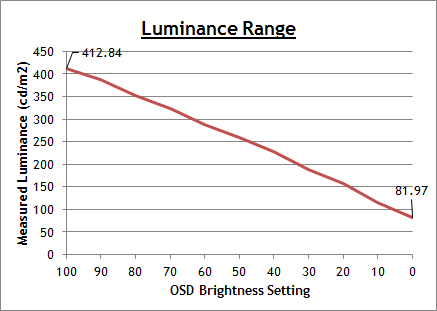

We have plotted the luminance trend on the graph above. The screen behaves as it should in this regard, with a reduction in the luminance output of the screen controlled by the reduction in the OSD brightness setting. This is pretty much a linear relationship.
The average contrast ratio of the screen was measured at a decent (for a TN Film panel) 1064:1 which was good.

Testing
Methodology
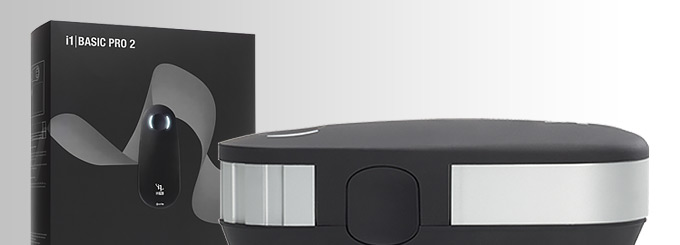
An important thing to consider for most users is how a screen will perform out of the box and with some basic manual adjustments. Since most users won't have access to hardware colorimeter tools, it is important to understand how the screen is going to perform in terms of colour accuracy for the average user.
We restored our graphics card to default settings and disabled any previously active ICC profiles and gamma corrections. The screen was tested at default factory settings using our new X-rite i1 Pro 2 Spectrophotometer combined with LaCie's Blue Eye Pro software suite. An X-rite i1 Display Pro colorimeter was also used to verify the black point and contrast ratio since the i1 Pro 2 spectrophotometer is less reliable at the darker end.
Targets for these tests are as follows:
-
CIE Diagram - confirms the colour space covered by the monitors backlighting in a 2D view, with the black triangle representing the displays gamut, and other reference colour spaces shown for comparison. Usually shown as a comparison against the common sRGB space
-
Colour space coverage volumes - we also measure using a piece of software called ChromaPure the colour space (gamut) volumes produced by the backlight in comparison to the sRGB, DCI-P3 and Rec.2020 colour spaces. sRGB is the most commonly used colour space so it is important to have a decent coverage from the screen here. If the colour space is >100% sRGB then the screen can produce a wider colour gamut, often reaching further in to the wider gamut DCI-P3 (commonly used for HDR) and Rec.2020 reference spaces.
-
Gamma - we aim for 2.2 which is the default for computer monitors
-
Colour temperature / white point - we aim for 6500k which is the temperature of daylight
-
Luminance - we aim for 120 cd/m2, which is the recommended luminance for LCD monitors in normal lighting conditions
-
Black depth - we aim for as low as possible to maximise shadow detail and to offer us the best contrast ratio
-
Contrast ratio (static) - we aim for as high as possible. Any dynamic contrast ratio controls are turned off here if present
-
dE average / maximum - we aim for as low as possible. If DeltaE >3, the color displayed is significantly different from the theoretical one, meaning that the difference will be perceptible to the viewer. If DeltaE <2, LaCie considers the calibration a success; there remains a slight difference, but it is barely undetectable. If DeltaE < 1, the color fidelity is excellent.

Default Performance
and Setup
Default settings of the screen were as follows:
|
Acer
Nitro XF252Q
|
|
|||||||||||||||||||||||||||||
|
|
Initially out of the box the screen was set with the 'Standard' preset mode. The display was set with a very high 80% brightness which was too bright and uncomfortable to use for long periods. You will want to turn that down. The screen felt a bit washed out and didn't look quite right for day to day normal uses. You could tell the screen was using a standard gamut backlight here. We went ahead and measured the default state with the i1 Pro 2. The CIE diagram on the left of the image confirms that the monitors colour gamut (black triangle) extends only slightly beyond the sRGB reference space (orange triangle) but matched that gamut pretty closely. We measured using ChromaPure software a 104.5% sRGB gamut volume coverage which corresponds to 77% of the DCI-P3 reference and 55.3% of the Rec.2020 reference. This confirms the screen is a standard sRGB gamut model as expected. There's no issues with that minor over-coverage. Default gamma was recorded at 2.5 average with a fairly large 12% overall deviance from the target which was a bit of a shame. The screen is aimed at gaming, and so there's not been much focus on an 'accurate' setup out of the box. We did test the two other gamma settings in the OSD menu too. The 1.8 setting returned a gamma average of 2.1 which was only 7% out from our target, but was too low in darker grey shades down to around 1.9. The 2.4 mode returned an average gamma of 2.7 which was 22% out from our target. The default 2.2 mode looked the best to the naked eye, and we will have to try and calibrate the screen in a moment to correct the average gamma. White point was measured at 6940k, being a little too cool and 7% out from our 6500k target. |
|
Luminance at the default 80% brightness level was recorded at a very bright 358 cd/m2 which is far too high for prolonged general use, you will need to turn that down. The black depth was 0.34 cd/m2 at this default brightness setting, giving us a decent (for a TN Film panel) static contrast ratio of 1065:1. Colour accuracy measurements showed there was some fairly large deviances between the desired colours and those produced, with an average dE of 3.9 and a maximum of 6.8. Again we will need to try and correct that through calibration in a moment. We tested the screen with colour gradients as well which showed no banding issues.
Overall default setup was poor for normal day to day uses. This is a gaming screen, and one based on a TN Film panel, so obviously it's not been a focus for Acer on this model. We can no doubt correct things through calibration, but it does limit the screen a little for any colour critical work for those without access to a calibration tool. Although you probably wouldn't choose a TN Film panel for those kind of uses anyway.

Calibration
We used the X-rite i1 Pro 2 Spectrophotometer combined with the LaCie Blue Eye Pro software package to achieve these results and reports. An X-rite i1 Display Pro colorimeter was used to validate the black depth and contrast ratios due to lower end limitations of the i1 Pro device.
|
Acer
Nitro XF252Q
|
|
|||||||||||||||||||||||||||||
|
As soon as you make changes to the OSD settings the screen enters the 'User' mode. The OSD settings were adjusted as shown in the table above, as guided during the calibration process and measurements. These OSD changes allowed us to obtain an optimal hardware starting point and setup before software level changes would be made at the graphics card level. We left the LaCie software to calibrate to "max" brightness which would just retain the luminance of whatever brightness we'd set the screen to, and would not in any way try and alter the luminance at the graphics card level, which can reduce contrast ratio. These adjustments before profiling the screen would help preserve tonal values and limit banding issues. After this we let the software carry out the LUT adjustments and create an ICC profile.
Average gamma was measured now at 2.2 average (0% deviance), correcting the fairly large 12% deviance we'd seen out of the box and tidying up the gamma curve nicely. The white point was measured at 6481k correcting again the 7% deviance that we'd seen before out of the box well. Luminance had been improved thanks to the adjustment to the brightness control and was now being measured at a far more comfortable 116 cd/m2. We measured a black depth of 0.12 cd/m2 and this produced a static contrast ratio of 983:1. This maintained the strong default contrast ratio for a TN Film panel which was pleasing, with a minor drop due to the changes to the RGB controls and the profiling of the screen.
Colour accuracy of the resulting profile was good, with dE
average of 0.7 and maximum of 2.1. LaCie would consider colour fidelity to be
very good overall.
Testing the screen with various colour
gradients showed mostly smooth transitions with some minor gradation in darker
tones and some very minor banding in the darker area creeping in.
You can use our settings
and try our calibrated ICC profile if you wish, which are available in
our ICC profile database. Keep in mind that results will vary from one
screen to another and from one computer / graphics card to another.

Calibration
Performance Comparisons
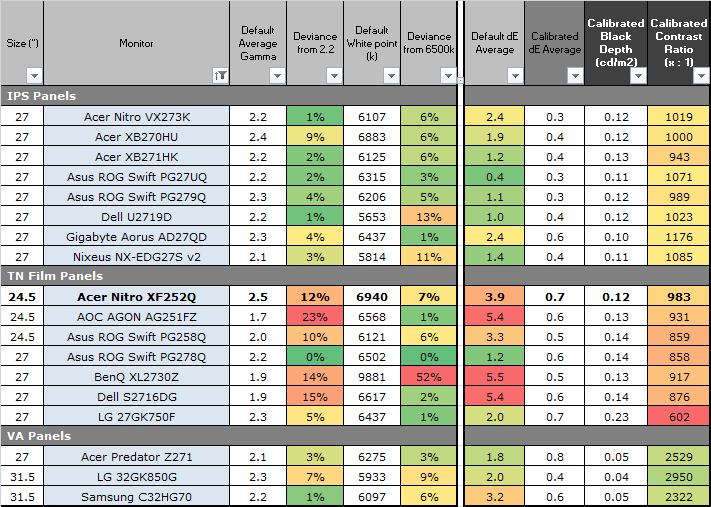
The comparisons made in this section try to give you a better view of how each screen performs, particularly out of the box which is what is going to matter to most consumers. We have divided the table up by panel technology as well to make it easier to compare similar models. When comparing the default factory settings for each monitor it is important to take into account several measurement areas - gamma, white point and colour accuracy. There's no point having a low dE colour accuracy figure if the gamma curve is way off for instance. A good factory calibration requires all 3 to be well set up. We have deliberately not included luminance in this comparison since this is normally far too high by default on every screen. However, that is very easily controlled through the brightness setting (on most screens) and should not impact the other areas being measured anyway. It is easy enough to obtain a suitable luminance for your working conditions and individual preferences, but a reliable factory setup in gamma, white point and colour accuracy is important and some (gamma especially) are not as easy to change accurately without a calibration tool.
From these comparisons we can also compare the calibrated colour accuracy, black depth and contrast ratio. After a calibration the gamma, white point and luminance should all be at their desired targets.
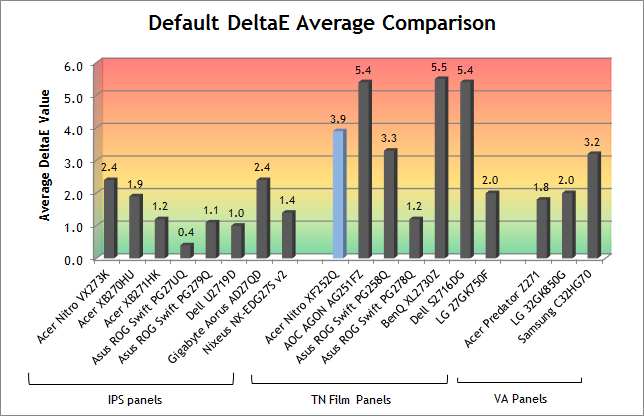
Default setup of the screen out of the box was not very good unfortunately, as with most TN Film gaming screens. The gamma was probably the largest issue, with a 12% deviance out of the box from our 2.2 target and a bit tricky to correct without the use of a calibration device. The white point was also a little off, although easier to correct through simple RGB adjustments in the OSD menu.
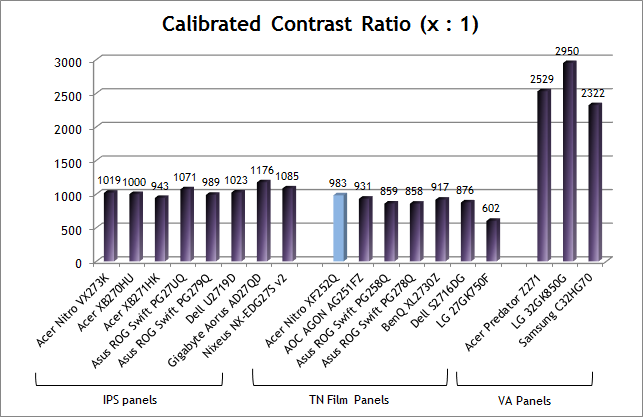
When it comes to black depth and contrast ratio the screen performed well for a TN Film panel at 983:1 after calibration. This was the highest of the TN Film models shown in the comparison table and graph above in fact. Modern IPS panels are fairly similar in most cases, although some can reach up to around 1100:1 - 1200:1 in the best cases. The VA panels can reach much higher though, up over 2000:1 easily as that's a strength of that panel technology.
|
Check Pricing and Buy - Direct Links |
|
TFTCentral is a participant in the Amazon Services LLC Associates Programme, an affiliate advertising programme designed to provide a means for sites to earn advertising fees by advertising and linking to Amazon.com, Amazon.co.uk, Amazon.de, Amazon.ca and other Amazon stores worldwide. We also participate in a similar scheme for Overclockers.co.uk. |

Viewing Angles
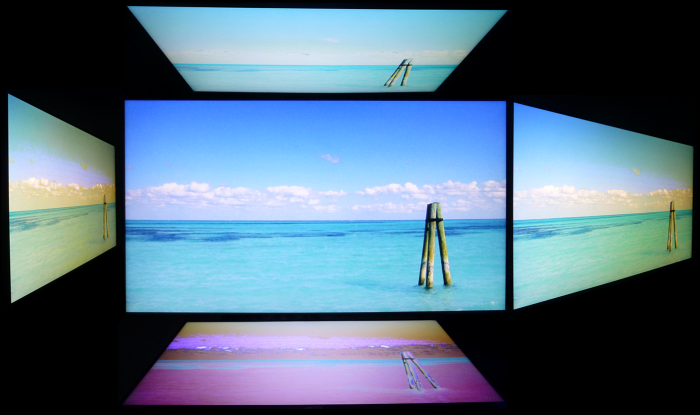
Above: Viewing angles shown from front and side, and from above and below.
Click for larger version
Viewing angles of the screen were as you might expect from a TN Film panel. Unfortunately this panel technology is inherently poor in this field, and so viewing angles are more restrictive than other competing technologies like IPS and VA variants. Although the manufacturer will quote a viewing angle of 170 / 160 (a classic indication that a TN Film panel is being used by the way if in doubt), in practice there are some obvious contrast and colour tone shifts horizontally, and especially vertically.
As you move your head from side to side in a horizontal plane, there is a contrast shift and the image becomes more pale and introduces a yellow hue. As you move to a wider angle the image can become more washed out as well and a more yellow hue is introduced. Vertically the fields of view are more restrictive still with more noticeable contrast shifts. From above the image becomes pale and washed out, while from below there is a characteristic TN Film darkening of the image. Unfortunately vertically the viewing angles will introduce noticeable shifts in the contrast and colour tone of the image which mean that for any colour critical work it is not really very well suited. TN Film panels have long suffered from these restrictive viewing angles due to the nature of their pixel structure. They are still fine for a single user for general use and certainly the TN Film panels offer their advantages when it comes to pixel response times and refresh rate for gaming. If however, you were hoping to do any colour critical or photography work you may find these shifts in the appearance of the image difficult.
An IPS-type panel would probably be a wiser choice if you were looking for a screen with much wider viewing angles but having said that you are probably mainly interested in gaming if you are considering this screen. Remember, this screen is specifically designed for gaming, and so you will have to live with some of the sacrifices of TN Film to get the kind of gaming performance and features offered here. There are some high refresh rate gaming IPS panels available now in larger sizes as well which can offer better viewing angles than TN Film models, although they are normally priced higher and have some other characteristic differences, and so TN Film models like this still have their place for many users.
Above: View
of an all black screen from the sides. Click for larger version
On a black image there is a slight pale grey tint introduced to the image when viewed from a wide angle. This isn't too severe and shouldn't present any real problems in practice. Certainly not the obvious white glow you get from most modern IPS-type panels in similar situations and fairly standard for a TN Film panel. Very similar to what we have seen from other recent gaming TN Film screens including the competing 24.5" 240Hz Asus ROG Swift PG258Q. The glow you see from most modern IPS panels can put off some users. So on the one hand, those IPS models have much better general viewing angles than the TN Film models, but they do show more glow which some people find an issue.

Panel Uniformity
We wanted to test here how uniform the brightness was across the screen, as well as identify any leakage from the backlight in dark lighting conditions. Measurements of the luminance were taken at 35 points across the panel on a pure white background. The measurements for luminance were taken using BasICColor's calibration software package, combined with an X-rite i1 Display Pro colorimeter with a central point on the screen calibrated to 120 cd/m2. The below uniformity diagram shows the difference, as a percentage, between the measurement recorded at each point on the screen, as compared with the central reference point.
It is worth noting that panel uniformity can vary from one screen to another, and can depend on manufacturing lines, screen transport and other local factors. This is only a guide of the uniformity of the sample screen we have for review.
![]()
Uniformity of Luminance

Luminance uniformity of the screen was not very good with the sides of the screen being quite a bit darker than the centrally calibrated area. In the most extreme cases, the luminance dropped down to 93 cd/m2 along the left hand side of the screen (-29%). Only 42% of the screen remained within a 10% deviance of the centrally calibrated point of 120 cd/m2.
![]()
Backlight Leakage
Above: All
black screen in a darkened room. Click for larger version
We also tested the screen with an all black image and in a darkened room. A camera was used to capture the result. There was no real issues visible here with any bleeding of clouding.
Note: if you want to test your own screen for backlight bleed and uniformity problems at any point you need to ensure you have suitable testing conditions. Set the monitor to a sensible day to day brightness level, preferably as close to 120 cd/m2 as you can get it (our tests are once the screen is calibrated to this luminance). Don't just take a photo at the default brightness which is almost always far too high and not a realistic usage condition. You need to take the photo from about 1.5 - 2m back to avoid capturing viewing angle characteristics, especially on IPS-type panels where off-angle glow can come in to play easily. Photos should be taken in a darkened room at a shutter speed which captures what you see reliably and doesn't over-expose the image. A shutter speed of 1/8 second will probably be suitable for this.

General and Office Applications
With a 1920 x 1080 resolution, the desktop real estate of the XF252Q feels a fairly big step down compared with all the high resolution panels we've tested, and the 27" 2560 x 1440 models we are used to using day to day. You do lose a large amount of desktop space, and although side by side split screen working is possible, it's not as easy due to the more limited resolution and space. With a 0.2825mm pixel pitch, text is comfortable and easy to read natively, providing a sharp and crisp image. It is not as sharp as the 1440p panels we've become accustomed to, or of course any ultra HD/4K resolutions where scaling is used, but it is perfectly adequate.
The moderate AG coating of the TN Film panel could be considered a bit grainy, especially on white office backgrounds to a lot of people. It's not as clear as modern IPS coatings or any semi-glossy solution. Still, it's not as grainy as old IPS panels and is on par with other TN Film matrices we've tested. Perhaps the main issue with this panel technology though is the restrictive viewing angles, making contrast and colour tone shifts a bit of a problem when it comes to colour critical work. They are the same here as other TN Film panels, being restrictive especially vertically. The screen is fine when viewed head on though really for office and text work, but for colour critical work or photo editing etc you'd be better off with an IPS-type panel. The default setup of the screen was a little restrictive for normal uses, as the gamma is set up more for gaming, and the colour accuracy out of the box is not very good. You can improve things through some simple OSD adjustments although you'd really want access to a calibration device to correct the gamma if you rely on the setup being more accurate. This isn't really a panel technology which is well suited to colour critical work though.
There are some blue light filter modes offered in the menu if you want to add further eye care protection but they operate with a fixed brightness setting in each mode, which makes them unusable really. The brightness of the display is too high when using those modes, and you can't manually alter the brightness control without turning off the preset blue light filter mode.
The range of brightness adjustment of the screen was good, with the ability to offer a luminance between 413 and 82 cd/m2. However, the adjustment potential at the lower end was slightly limited and that means that it might be hard to use the screen in darker room conditions where there is a lower ambient light. A setting of 11% in the OSD brightness control should return you a luminance close to 120 cd/m2 out of the box. The brightness regulation is controlled without the need for Pulse-Width Modulation (PWM), and so those who suffer from eye fatigue or headaches associated with flickering backlights need not worry. There was no audible noise or buzzing from the screen, even when specifically looking for it using test images with a large amount of text at once. The screen also remains cool even during prolonged use.
There are a couple of extra features on this screen for office environments, even though it's primarily a gaming screen. There are 2x USB 3.0 ports on the back of the screen, but also 2x ports on the left hand edge for each access. There's also a headphone connection and also some basic 2 x 2W integrated speakers suitable for the occasional YouTube video or mp3. There is no ambient light sensor, card reader, motion sensor or anything else provided which can sometimes be useful in office environments. There was a good range of ergonomic adjustments available from the stand allowing you to obtain a comfortable position for a wide variety of angles. The VESA mounting support may also be useful to some people as well.

Responsiveness and Gaming
|
Panel Manufacturer and Technology |
AU Optronics TN Film |
|
Panel Part |
M250HTN01.9 |
|
Quoted G2G Response Time |
0.3ms G2G (minimum) |
|
Quoted MPRT Response Time |
Not Quoted |
|
Overdrive Used |
Yes |
|
Overdrive Control Available Via OSD Setting |
Overdrive |
|
Overdrive OSD Settings |
Off, Normal, Extreme |
|
Maximum Refresh Rate |
240Hz Native |
|
Variable Refresh Rate technology |
AMD FreeSync |
|
Variable Refresh Rate Range |
48 - 240Hz with LFC |
|
Blur Reduction Backlight |
Yes (VRB mode) |
The screen uses overdrive technology to boost pixel transitions across grey to grey changes as with nearly all modern displays. The part being used is an AU Optronics M250HTN01.9 TN Film technology panel. Have a read about response time in our specs section if you need additional information about this measurement.
We use an
ETC M526
oscilloscope for these measurements along with a custom photosensor device.
Have a read of
our response time measurement article for a full explanation of the testing
methodology and reported data.

Over Drive Setting
|
|
|
We carried out some initial response time measurements and visual tests in each of the overdrive settings, and at a range of refresh rates. The response time control is available in the OSD menu via the 'Over Drive' option as shown above. These tests were conducted at a fixed refresh, with performance being basically the same whether FreeSync was turned on or off in the menu.



It
was very easy to see with the naked eye that the 'Normal' response time mode
offered the best performance. The Off mode unsurprisingly showed more noticeable
blurring and trailing on moving content. The Extreme mode showed some noticeable
and distracting overshoot artefacts in the form of pale halos behind moving
objects. This was particularly apparent at lower refresh rates. We stuck
therefore with the 'Normal' mode which visually looked very sharp, clear and had
excellent motion clarity at all refresh rates, but particularly the upper end.
From the measurements above you can see that the actual pixel response times
remained consistent at all refresh rates, from 60Hz all the way up to the
maximum 240Hz. The average G2G measured was around 2.4ms in this small sample
set which was really excellent. The difference though as you increased the
refresh rate came with a reduction to the overshoot. We should point out that it
was very hard to see any real artefacts or halos at any refresh rate in this
'Normal' mode, but from our measurements the overshoot was a bit higher at 60Hz
than at the higher refresh rates. Like we say though, really not very noticeable
at all. It was nice to see that it had largely been eliminated by the time you
reach the higher refresh rates as well. The overall motion clarity improved
significantly as you increased the refresh rate, as that has a direct impact on
perceived motion blur on LCD displays. At 240Hz is was very smooth and sharp and
moving content looked excellent.

In case you were interested, here are the measurements for 240Hz but at the 'Extreme' overdrive mode. The overshoot had become much more noticeable in practice, and in our measurements. This was also the best case for the 'Extreme' mode, as like in the 'Normal' mode shown above, the overshoot increased a bit as the refresh rate dropped - here it was measured at 240Hz. The best response time measured here was 0.9ms G2G, so not quite reaching the advertised 0.3ms but still an impressive performance from the panel.
Variable Refresh Rate (VRR)
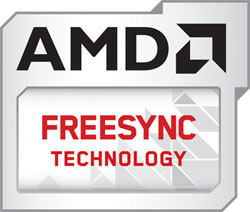
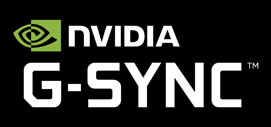
The screen natively supports AMD FreeSync for variable refresh rates between 48 and 240Hz. As listed on AMD's website the screen is not certified under their newer FreeSync 2 scheme, despite it also including LFC support and accepting an HDR input signal (more on the HDR capabilities later). AMD FreeSync Technology is supported with DisplayPort and HDMI connections, allowing the XF252Q to be compatible with AMD Radeon Graphics Cards (and modern NVIDIA cards for G-sync), Xbox X, Xbox One, and other future gaming consoles and devices that support FreeSync and Adaptive-Sync.
The XF252Q has not been certified at the time of writing under NVIDIA's recent 'G-sync Compatible' scheme, but you can still use it from NVIDIA graphics cards with variable refresh rates. It will support VRR over DisplayPort only.
The support for FreeSync and G-sync will be very useful given the significant system demands of running a screen at 1920 x 1080 resolution and up to 240Hz refresh rate. It was of course very good to see it included here. We know from our response time measurements above that even if you use the screen with FreeSync/G-sync and the refresh rate drops down to nearer 60Hz, the response times remain consistent and do not fluctuate much at all. The overdrive does start to creep up a bit as the refresh rate reduces, but never to the point where it's really obvious in practice to be honest. You might also want to read our newly updated article about Variable Refresh Rates here.

Detailed Response Times
240Hz Refresh Rate, Overdrive = Normal

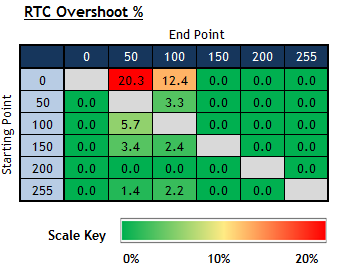

We carried out some further response time measurements at the maximum 240Hz refresh rate supported by the screen and with the overdrive set to the 'Normal' setting. Having taken some further measurements at a range of pixel colour transitions, the average G2G response time was more accurately measured now at an impressive 2.6ms. Some reached down to a minimum of 0.9ms even. There was very little overshoot measured at all at the maximum 240Hz refresh rate, although we know that it creeps up a little as the refresh rate lowers but never to the point where it's noticeable in practice really. An excellent performance when it comes to response times.

Gaming Comparisons
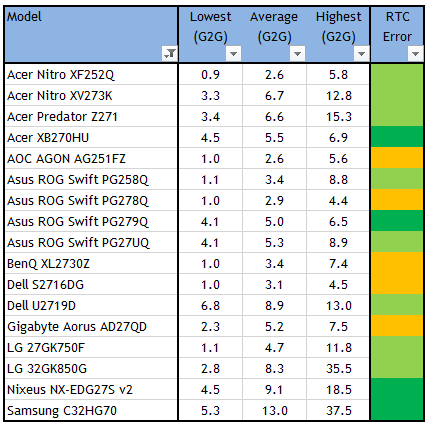
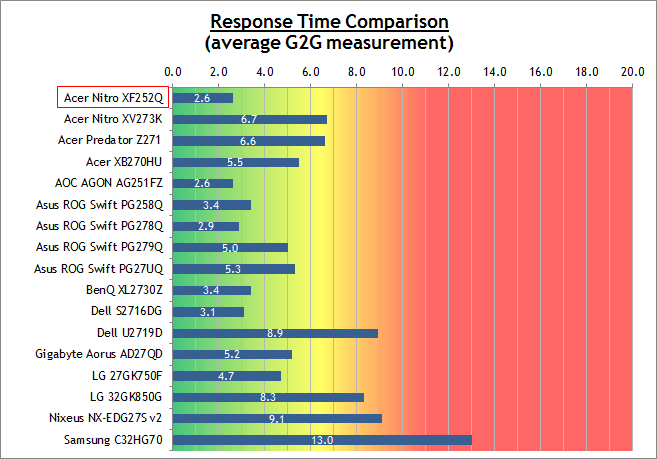
We have provided a comparison of the XF252Q against many other gaming screens we have reviewed in a similar size range and across a range of panel technologies. At optimal settings the XF252Q was fairly comparable to the other 24.5" 240Hz TN Film models we've tested, being a little faster and without some of the overshoot problems of those older generation screens. The AOC AGON AG251FZ and Asus ROG Swift PG258Q are direct competitors to the XF252Q, and were from an older AU Optronics TN Film panel generation, and so there have been some slight improvements with this latest offering.
All things considered, the XF252Q was the fastest panel we've tested to date, with a 2.6ms average G2G, a 0.9ms minimum, support for 240Hz refresh rates and low levels of overshoot that were basically undetectable in practice. The responsiveness and motion clarity overall surpasses what is possible from current IPS and VA panel offerings as well which have slower overall response times, but also more limited refresh rate support in most cases.

Additional
Gaming Features
-
Aspect Ratio Control - the screen has various settings for hardware level aspect ratio control. This includes options for full, aspect and 1:1 which are probably going to be the most useful. The screen is 16:9 natively so most external devices are going to be fine without needing scaling anyway.
-
Preset Modes - There are a few different preset modes aimed at gaming that can be customised and used if you want. This includes modes for action, racing and sports. You can save your own settings for each of these modes too which is handy.
-
Aim point and refresh rate number - there are settings in the OSD for a familiar aim point graphics to be added to the screen, or a counter for your active refresh rate.
![]()
Motion Blur Reduction (VRB Mode)
The strobing blur reduction backlight option is available via the 'Visual Response Boost' (VRB) setting. This cannot be used at the same time as FreeSync, so if you enabled VRB, it will disable FreeSync support.
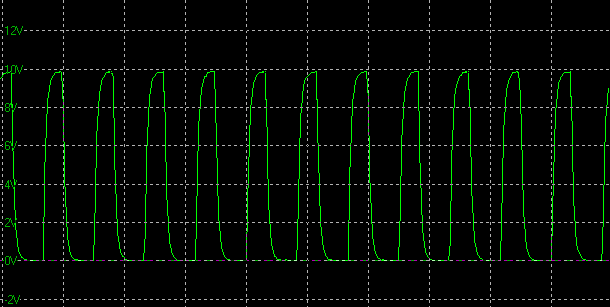
Normal mode -
Example strobing at 240Hz, horizontal scale = 5ms
This option is available at refresh rates of 120, 144 and 240Hz only, nothing below that. We measured the on/off strobing using our oscilloscope and confirmed that the strobing is in sync with the refresh rate. So at 240Hz for instance (shown above) the backlight is turned off/on every 4.17ms (240 times per second).
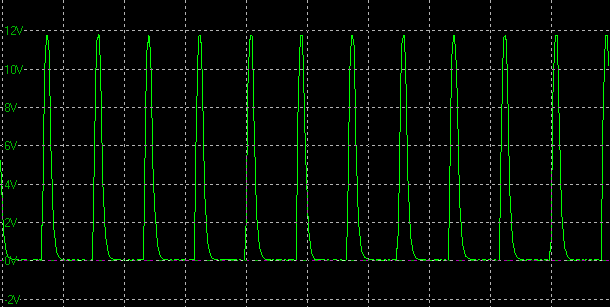
Extreme mode -
Example strobing at 240Hz, horizontal scale = 5ms
There are two levels to this setting, 'normal' and 'extreme'. The latter offers a shorter 'on' time for the strobe in an effort to help reduce the perceived motion blur even further. The most noticeable difference though is to the brightness of the display, which we measured in each mode below.
Max Brightness VRB (Normal mode)
|
Refresh Rate |
Luminance |
Black Point |
Contrast Ratio |
| 240Hz | 255.91 | 0.25 | 1024:1 |
|
144Hz |
220.77 |
0.21 |
1051:1 |
|
120Hz |
195.98 | 0.19 | 1031:1 |
Max Brightness VRB (Extreme mode)
|
Refresh Rate |
Luminance |
Black Point |
Contrast Ratio |
| 240Hz | 136.28 | 0.13 | 1048:1 |
|
144Hz |
81.61 | 0.08 | 1020:1 |
|
120Hz |
68.00 | 0.07 | 971:1 |
When you enable the VRB mode the brightness control becomes locked, and there is no way to manually control it yourself. It doesn't matter what your brightness control was before, the luminance output when you enable VRB is always the same. This does vary depending on the refresh rate, but oddly the brightness actually increases as you increase the refresh rate. You would think that with more strobes per second, the brightness would be negatively impacted, but it looks like Acer have instead ramped up the backlight intensity a bit at higher refresh rates. You can see that the 'Extreme' mode has a fairly noticeable impact on brightness of the screen. You will see from our motion clarity tests below that there wasn't really any noticeable improvement when switching to the 'Extreme' mode, but you may want to use if to limit your brightness a bit potentially. For those who want a brighter VRB experience though, it was nice to see a high upper brightness capability from this display.
Maximum Blur Reduction Brightness - Display Comparison
For ease of reference we have also provided a comparison table below of all the blur reduction enabled displays we've tested, showing their maximum luminance before blur reduction is turned on (normal mode) and their maximum luminance with the feature enabled. This will give you an idea of the maximum brightness you can expect from each model when using their blur reduction feature, if that is important to you. A lot of people want a brighter display for gaming and sometimes the relatively low maximum luminance from blur reduction modes is a limitation.
These comparisons are with the refresh rate as high as is available for the blur reduction feature to function. For most this is at 100 - 144Hz. You can achieve a slightly brighter display if you use the feature at compatible lower refresh rates since the strobes are less frequent, but it's not a significant amount. That can also introduce more visible flicker in some situations.
|
Model |
Refresh Rate |
Max
Normal Luminance |
Max
Luminance Blur Reduction On |
| Acer Nitro XF252Q | 240Hz | 413 | 226 |
|
Acer Nitro XV273K |
144Hz |
503 |
195 |
|
Acer Predator XB270HU* |
100Hz* |
327 |
111 |
|
Acer Predator Z35 |
120Hz |
359 |
111 |
|
Asus ROG Strix XG35VQ |
100Hz |
376 |
164 |
|
Asus ROG Swift PG258Q |
144Hz |
488 |
275 |
|
Asus ROG Swift PG278Q |
120Hz |
385 |
123 |
|
Asus ROG Swift PG279Q |
120Hz |
331 |
101 |
|
BenQ XL2720Z |
144Hz |
282 |
119 |
|
BenQ XL2730Z |
120Hz |
309 |
191 |
|
Dell S2716DG |
120Hz |
328 |
118 |
|
Eizo FG2421 |
120Hz |
386 |
257 |
|
Eizo FS2735 |
144Hz |
331 |
180 |
|
Gigabyte Aorus AD27QD |
144Hz |
471 |
129 |
|
LG 27GK750F |
240Hz |
452 |
199 |
|
LG 34GK950F |
144Hz |
390 |
235 |
|
LG 34UC79G |
144Hz |
267 |
141 |
|
LG 38UC99 |
75Hz |
308 |
213 |
Note:
Pulse Width setting at max where applicable.
*Note 2: The Acer XB270HU was later updated to include a 120Hz mode, which will
produce a slightly darker maximum luminance
Blur Reduction Tests
Of course the main thing we want to test is what improvements the Blur Reduction mode offers when it comes to motion clarity and gaming. The following pursuit camera photos give you an indication of observed motion clarity as the human eye would see it at the top, middle and bottom areas of the screen. These were captured at the maximum refresh rate.
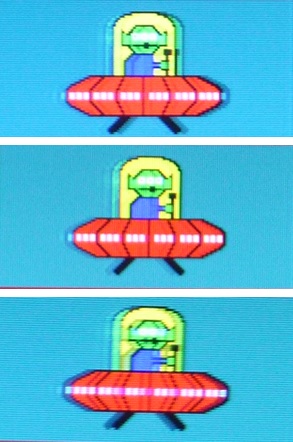
Pursuit camera photos capturing motion clarity at the top, middle and bottom
areas of the screen (240Hz)
As with most strobing blur reduction backlights it did help improve eye tracking of moving objects across the screen, making them sharper and easier to follow. That's one of the key benefits of this kind of technology. There was minimal strobe cross talk visible in the upper and middle regions of the screen, which is where you get a slight ghosting to the moving image. In the bottom area of the screen this was a bit more noticeable and it's impossible to eliminate this all together. We were pleased though with the overall motion clarity and improvements in how easy it was to track moving objects with this mode enabled. There was no real visual difference between the 'Normal' and 'Extreme' modes other than the brightness of the display we felt.
Overall we were impressed by the operation of the VRB mode on this display, it worked well. Given the very fast response times and high refresh rate, many people will find the non-VRB operation very fast as well, and so you might benefit more from the VRR support offered by using the FreeSync mode instead of the VRB function.

Lag
We have written an in depth article about input lag and the various measurement techniques which are used to evaluate this aspect of a display. It's important to first of all understand the different methods available and also what this lag means to you as an end-user.
Input Lag vs. Display Lag vs. Signal Processing
To avoid confusion with different terminology we will refer to this section of our reviews as just "lag" from now on, as there are a few different aspects to consider, and different interpretations of the term "input lag". We will consider the following points here as much as possible. The overall "display lag" is the first, that being the delay between the image being shown on the TFT display and that being shown on a CRT. This is what many people will know as input lag and originally was the measure made to explain why the image is a little behind when using a CRT. The older stopwatch based methods were the common way to measure this in the past, but through advanced studies have been shown to be quite inaccurate. As a result, more advanced tools like SMTT provide a method to measure that delay between a TFT and CRT while removing the inaccuracies of older stopwatch methods.
In reality that lag / delay is caused by a combination of two things - the signal processing delay caused by the TFT electronics / scaler, and the response time of the pixels themselves. Most "input lag" measurements over the years have always been based on the overall display lag (signal processing + response time) and indeed the SMTT tool is based on this visual difference between a CRT and TFT and so measures the overall display lag. In practice the signal processing is the element which gives the feel of lag to the user, and the response time of course can impact blurring, and overall image quality in moving scenes. As people become more aware of lag as a possible issue, we are of course keen to try and understand the split between the two as much as possible to give a complete picture.
The signal processing element within that is quite hard to identify without extremely high end equipment and very complicated methods. In fact the studies by Thomas Thiemann which really kicked this whole thing off were based on equipment worth >100,1000 Euro, requiring extremely high bandwidths and very complicated methods to trigger the correct behaviour and accurately measure the signal processing on its own. Other techniques which are being used since are not conducted by Thomas (he is a freelance writer) or based on this equipment or technique, and may also be subject to other errors or inaccuracies based on our conversations with him since. It's very hard as a result to produce a technique which will measure just the signal processing on its own unfortunately. Many measurement techniques are also not explained and so it is important to try and get a picture from various sources if possible to make an informed judgement about a display overall.
For our tests we will continue to use the SMTT tool to measure the overall "display lag". From there we can use our oscilloscope system to measure the response time across a wide range of grey to grey (G2G) transitions as recorded in our response time tests. Since SMTT will not include the full response time within its measurements, after speaking with Thomas further about the situation we will subtract half of the average G2G response time from the total display lag. This should allow us to give a good estimation of how much of the overall lag is attributable to the signal processing element on its own.
Lag Classification
To help in this section we will also introduce a broader classification system for these results to help categorise each screen as one of the following levels. We will now keep these classifications consistent regardless of the actual refresh rate of the screen being measured:
-
Class 1) Less than 8.33ms - the equivalent to 1 frame lag of a display at 120Hz refresh rate - should be fine for gamers, even at high levels
-
Class 2) A lag of 8.33 - 16.66ms - the equivalent of one to two frames at a 120Hz refresh rate - moderate lag but should be fine for many gamers. Caution advised for serious gaming
-
Class 3) A lag of more than 16.66ms - the equivalent of more than 2 frames at a refresh rate of 120Hz - Some noticeable lag in daily usage, not suitable for high end gaming

For the full reviews of the models compared here and the dates they were written (and when screens were approximately released to the market), please see our full reviews index.
|
|
||||||||||||||||||
We have provided a comparison above against other models we have tested to give an indication between screens. The screens tested are split into two measurements which are based on our overall display lag tests (using SMTT) and half the average G2G response time, as measured by the oscilloscope. The response time is split from the overall display lag and shown on the graph as the green bar. From there, the signal processing (red bar) can be provided as a good estimation.
There is an 'Ultra Low Latency' setting available in the OSD menu. We aren't really sure why you would ever want to turn this off to be honest, and it is enabled and locked by default when you enable FreeSync in the menu. We tested the lag in both off and on modes anyway.
In the off mode the total lag measured was 9.80 ms which is a bit too high for competitive gaming. Thankfully once the Ultra low latency mode was enabled the total lag was now only 3.30ms. With around 1.30 ms of that accounted for by pixel response times, we can estimate there is only ~2.00ms of signal processing lag, the actual lag you might feel during gaming and other uses. This was basically nothing and basically in line with even the fastest gaming screens in the comparison above. A great result when it comes to lag from this screen.

Movies and Video
The following summarises the screens performance for videos and movie viewing:
|
Category |
Display Specs / Measurements |
Comments |
|
Size |
24.5" widescreen |
Fairly small for a desktop monitor nowadays and smaller than TV's by a lot |
|
Aspect Ratio |
16:9 |
Well suited to most common 16:9 aspect content and input devices |
|
Resolution |
1920 x 1080 |
Can support native 1080p content, but not Ultra HD |
|
HDCP |
Yes |
Suitable for encrypted content |
|
Connectivity |
1x DisplayPort 1.2 and 2x HDMI 2.0 |
Useful additional 2x HDMI input for external Blu-ray players or games consoles. |
|
Cables |
DisplayPort and HDMI |
Both DisplayPort and HDMI provided |
|
Ergonomics |
Tilt, height. swivel, rotate |
Very good range of adjustments suitable to positioning the screen in a variety of angles for different viewing positions. A bit of wobble from the stand |
|
Coating |
Medium Anti-glare |
Provides fairly clear, not overly grainy image and avoids unwanted reflections of full glossy solutions |
|
Brightness range |
82 - 413 cd/m2 |
Good adjustment range offered including a higher peak brightness than many screens. Flicker free backlight operation with no PWM |
|
Contrast |
983:1 after calibration |
Good TN Film contrast ratio which should be fine for most content. Buying an alternative VA technology panel would provide you a higher contrast ratio if you watch a lot of dark content and miss some shadow detail |
|
Preset modes |
None |
There is no specific preset mode for movies or video, but you can easily set up the screen how you like and then save it as one of the 'G' preset modes if you like for easy access |
|
Response times |
2.6ms G2G, no noticeable overshoot |
Response times are excellent overall and with low levels overshoot in the 'normal' setting. This includes at 60Hz for external devices |
|
Viewing angles |
Limited |
Limited TN Film viewing angles with noticeable contrast and tone shift from wider angles. Particularly restrictive vertically. Only really suitable for single person head-on viewing |
|
Backlight bleed |
No bleed |
No noticeable bleed from corners or edges |
|
Audio |
Headphone output and 2x 2W speakers |
Limited capability from the integrated speakers on this model but maybe ok for the odd video clip or trailer. Also a headphone jack provided |
|
Aspect Ratio Controls |
Full, aspect and 1:1 modes |
Good options to account for non-16:9 format inputs if needed although the native aspect of the screen is likely to be suitable for a lot of content |
|
PiP / PbP |
Not supported |
n/a |
|
HDR support |
No meaningful support |
Can take an HDR input signal but has no local dimming capability, so cannot truly offer an improved dynamic range. Has peak brightness of >400 cd/m2 so likely to eventually carry the rather meaningless HDR400 certification but lacks any extended colour space or even 10-bit colour depth support. |

Conclusion
If you would like to help support our continued work please consider making a donation no matter how small or large. Thank you for the continued support.
The Acer XF252Q was an impressive gaming screen for sure. It's the fastest panel we've tested to date in fact, with the lowest, most consistent response times, no noticeable overshoot, support for 240Hz refresh rate natively, support for FreeSync and G-sync, very low input lag; and even a nice, working motion blur reduction backlight option. We were certainly impressed by its gaming performance with super motion clarity, smooth motion and a snappy feel. It's quite a bit smaller than most screens we are used to and the lower 1080p resolution is a bit of a step down from common 1440p displays, certainly for other non-gaming uses. However, it is still a popular screen size and the system drain of running 1080p @ 240Hz is of course much less than if it were 1440p @ 240Hz.
Away from gaming the screen is more limited as you might expect given the use of a TN Film panel. Viewing angles are restrictive, default setup is fairly poor and colour accuracy isn't very good without calibration. The contrast ratio is at least good for a TN Film panel which is a plus. It's fine for general day to day usage, but you probably wouldn't want to select a TN Film panel like this for any colour critical work or more professional uses.
Overall though if you are looking for a pure
gaming screen with excellent performance in that area, and want something a bit
smaller than the wide range of 27"+ models out there, and with a more manageable
1080p gaming resolution, this is a really excellent option.
|
Pros |
Cons |
| Very fast response times with low overshoot | Limited viewing angles from TN Film panel technology |
| 240Hz refresh rate with VRR support for FreeSync and G-sync | Poor default setup, not really very well suited to any colour critical work |
| Useful additional VRB mode that works well | 1080p is a step down from common 1440p and above resolutions now available |
|
Check Pricing and Buy - Direct Links |
|
TFTCentral is a participant in the Amazon Services LLC Associates Programme, an affiliate advertising programme designed to provide a means for sites to earn advertising fees by advertising and linking to Amazon.com, Amazon.co.uk, Amazon.de, Amazon.ca and other Amazon stores worldwide. We also participate in a similar scheme for Overclockers.co.uk. |
|
TFT Central Awards Explained We have two award classifications as part of our reviews. There's the top 'Recommended' award, where a monitor is excellent and highly recommended by us. There is also an 'Approved' award for a very good screen which may not be perfect, but is still a very good display. These awards won't be given out every time, but look out for the logo at the bottom of the conclusion. A list of monitors which have won our awards is available here. |

